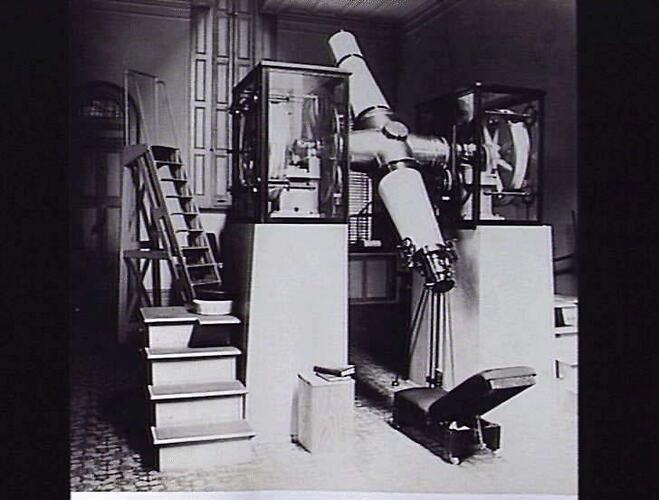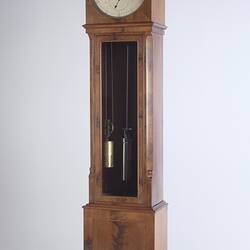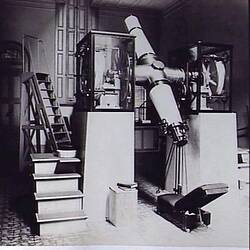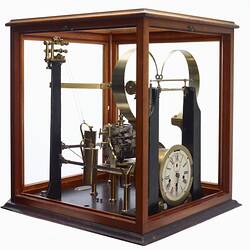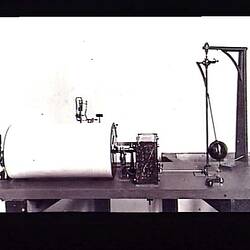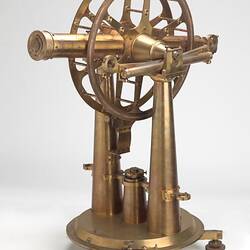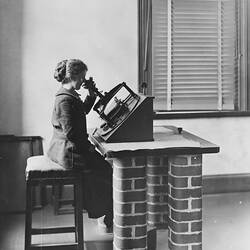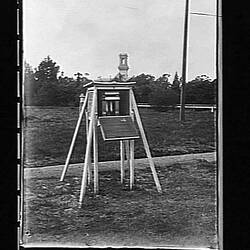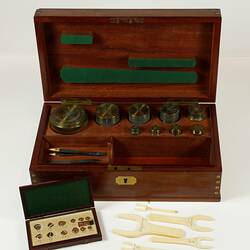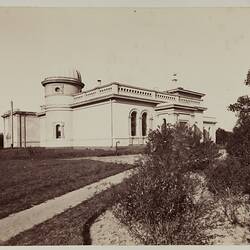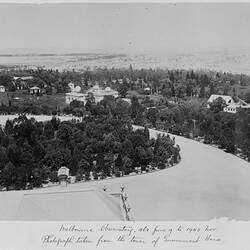Summary
Transit telescope with 8 inch aperture, 9 foot focal length, made by Troughton & Simms, London in 1883 and installed at Melbourne Observatory in July 1884.
The telescope was ordered by Government Astronomer Robert Ellery in November 1881, based on the design Troughton & Simms had used in the construction of a similar instrument at Cambridge University, England and Cambridge University in Boston, USA. The telescope and associated instruments cost 1,400 pounds.
Erected at Melbourne Observatory in a newly constructed East Transit Room. Used for all aspects of positional astronomy, including establishment of standard time, observations for star catalogues, and from the 1890s to measure reference stars for the international Astrographic project.
After Melbourne Observatory closed in 1945, the telescope was donated by the Victorian Government to the Royal Observatory, Greenwich. It was returned to Melbourne in 1978 and has remained dismantled ever since. It is hoped to eventually reassemble the telescope and return it to Observatory in the its original East Transit Room.
Physical Description
The telescope rotates on an axis of 52 inches, and rests on pivots of 4 ½ inches diameter. The axis carries two divided circles of 3 feet diameter, one fixed and the other movable about the axis.
Significance
This telescope was the main transit telescope at Melbourne Observatory from its installation in the East Transit Room in 1884 until the observatory closed in 1945. The telescope was the heart of the observatory. The meridian line that ran north-south through the telescope defined Melbourne Observatory's longitude, and established the baseline for all star observations.
The primary function of the telescope was to establish standard time for Melbourne and Victoria, by observing the movement of 'clock stars' -- stars whose positions were accurately known. Nightly observations made sure that the master clock in the Observatory was keeping time with the movement of the clock stars across the field of view of the telescope.
In the 1890s and 1900s the telescope was also used to measure thousands of fundamental stars for an international project. Comets were observed against background stars, to assist in determining the trajectories of comets in combination with observations from other observatories.
Observations also had to be taken constantly to test the accuracy of the instrument itself. In 1886 the astronomers detected a minute daily change in the east pivot, which was always higher in the morning and lower in the evening; they believed this was probably due to the heating effects of the sun on the earth's crust and on the building. Observations of stars close to the horizon gave measures of the refraction of the atmosphere, which had to be used to adjust all observations.
Two of the observatory's astronomers undertook transit observations on alternate weeks. This normally amounted to about 5 hours of observations a week, spread over two or three nights. They still had to attend their regular daytime hours. But they were given every second Saturday off, and allowed to leave their daytime shift half an hour early.
More Information
-
Collection Names
-
Collecting Areas
-
Acquisition Information
Donation & Subsequent Transfer from Royal Greenwich Observatory, Melbourne Observatory, 1978
-
Maker
-
User
Melbourne Observatory, South Yarra, Greater Melbourne, Victoria, Australia, 1884-1945
-
User
Mr. Edward J. White - Melbourne Observatory, South Yarra, Greater Melbourne, Victoria, Australia, 1884-1892
-
Classification
-
Category
-
Discipline
-
Type of item
-
Overall Dimensions
120 cm (Length), 200 cm (Width), 400 cm (Height)
APPROXIMATE DIMENSIONS
-
Keywords
